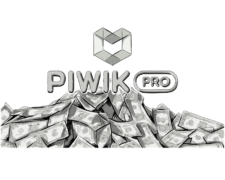People tend to talk (and write) about what they’re passionate about.
We are no different. You may have noticed this while reading our blog over the past year.
In case you missed out on the conversation, we’ve compiled some of our most popular advertising technology posts from 2015, including two info-graphics and several articles featured in other publications.
As you can see, we’re passionate about Ad Tech!
Why Cookie Alternatives are Vital for the Future of Mobile Advertising
As mobile internet usage has risen dramatically in recent years, so has the amount of advertisers who are focusing on mobile advertising. In fact, eMarketer estimates that between 2015 and 2019, mobile advertising will grow by a whopping $37.15 billion. For this reason, digital advertisers are increasingly interested in how to optimize their ad campaigns and target consumers more effectively.
However, because mobile web browsers use webview to display online content, it is much more difficult to track users with cookies. Fortunately, there are several alternatives.
In this article, we explore the advantages and disadvantages of:
- Client/Device Identifier
- Universal Login Tracking
- Device Fingerprint
- Statistical ID
- HTML5 Cookie Tracking
What is a Data Management Platform (DMP) and How Does it Work?
The more than 1.5 billion people who use the Internet every day serve as a massive audience for advertisers.
Thanks to first-, second-, and third-party user data available, it is possible to form a highly precise profile of potential customers, which can then be used to greatly optimize advertising and marketing campaigns.
Unfortunately, these enormous amounts of data are useless without a platform to collect, store, analyze, and utilize them.
This is where a Data Management Platform (DMP) comes in. Working in conjunction with Demand-Side Platforms (DSP) as well as Ad Exchanges, Supply-Side Platforms (SSP), and other advertising technology platforms, a DMP forms a critical part of the complex online advertising-technology ecosystem.
Understanding their capabilities and uses is critical for advertisers and marketers who want to capitalize on the revenue-generating potential of the Internet landscape.
How Does Real-Time Bidding Work?
Online display ads are everywhere. We see them every time we load a page and often we are surprised at how relevant they are to us and our interests.
Little do we realize that this phenomenon is due to a process called real-time bidding. Thanks to the integration of a number of different programmatic platforms (DSP, SSP, Ad Exchange) an online publisher can put ad space up for auction and get it sold, and also draw and display the winning ad, all in about 100 milliseconds – the amount of time it takes to load a web page.
This lightning-fast process is one of the keys to the success of online ad campaigns and will play a vital role in the continued growth of the ad tech landscape.
The Truth About Online Privacy: How Your Data is Collected, Shared, and Sold
It’s no secret that internet users leave a long trail of data behind them as they browse the web.
Because of the potential for massive revenue, the tracking, collecting, and analyzing of this data is of paramount importance to many people, online display advertisers most of all. This creates a great deal of controversy among privacy advocates as well as individuals, which is why it is essential to have a clear picture of how your data is tracked, what technologies are used, and what tools you have at your disposal to “track the trackers.”
What is a Demand-Side Platform (DSP)?
Supply-Side Platforms. Ad exchanges. Real-time bidding.
These are just some of the elements that make up the ad tech ecosystem. Another key part is a Demand-Side Platform (DSP). As media buyers search for appropriate places to put their ads, and ad exchanges look to sell their inventory, a DSP serves as sort of stockbroker to bring the two sides together.
The Good, the Bad, and the Ugly of Native Advertising
Not many people are interested in looking at display ads online anymore. Much less clicking on one.
This painful truth has forced online ad publishers to turn to other forms of advertising to keep revenue up. One solution is native advertising, in which ads are shown in such a way as to follow the form and function of the medium they are displayed in. Because of the variety of channels through which users interact with online content, the possibilities for native ads are quite diverse and they have proven to be very successful.
What is Cookie Syncing and How Does it Work?
Most people like cookies. The kind you eat anyway.
Fewer are enamored with the kind used to track Internet users’ actions and preferences, although they often don’t realize how useful they are in making their online experience better.
And while they may arouse some controversy, cookies are an integral part of driving the revenue of the online advertising industry, which has the effect of making large portions of online content free to users.
Their effectiveness would be greatly reduced if it weren’t for the process of cookie syncing, in which first-, second-, and third-party cookies are aligned across several platforms to create a more precise user profile and allow for a more personalized user experience.
Why a Lack of Transparency is Killing the Potential of Programmatic Buying
Technological advancements have greatly enhanced the process of buying online advertising space. Thanks to programmatic buying, advertisers have been able to streamline and automate their campaigns.
But all is not as rosy as it might seem. The complex structure of the programmatic landscape – with DSPs, SSPs, Ad Exchanges and Ad Agencies all in the mix – means that each player is looking to get a slice of the profits. As a consequence, advertisers often do not have a clear picture of exactly how they are spending their money.
The resulting lack of transparency poses a serious threat to the future of programmatic media-buying and the ad tech industry as a whole.
Why Advertisers and Agencies Need to Tune In to Programmatic TV
From 2013 to 2015, the percentage of advertising money spent on digital programmatic ads nearly doubled.
This is just one of the many indications of programmatic’s increasing influence on the advertising industry. By analyzing data like demographics, geo-location and behavior history, the platforms used in programmatic media buying can link ads with their ideal target audience. This technology also has great potential for TV advertising.
How Real-Time Bidding Changed Online Display Advertising
Much has changed in the online advertising landscape since AT&T launched the first display ad in 1994. Now it’s difficult to even imagine browsing the Internet without seeing some form of ad – whether a pop-up, banner, or video.
As advertisers caught on to the potential of internet advertising and the number of sites offering ad space grew, the ad-buying process grew infinitely more complex. What was once a simple transaction between publisher and advertiser soon became a more drawn-out process. With the rise of ad networks and, later, ad-exchanges, things improved. What has really changed online advertising dramatically is real-time bidding.
The Colorful History of AdTech in Just 63 Slides
Understanding the present and planning for the future require a knowledge of the past.
That’s why it’s worth taking a look back at the checkered past of the Advertising Technology industry as we seek to peer into the future.
From the first wildly successful banner ad in 1994 to the explosion of pop-ups and their decimation in the wake of the dot-com bust in the late nineties, Ad Tech has seen rapid evolution on its path to becoming the complex ecosystem that it is today.
How The Real-Time Bidding (RTB) Ad Exchange Works [Infographic]
One of the most complex pieces of technology to come on the Ad Tech scene in recent years is the Real-Time Bidding (RTB) Ad Exchange. Its advantages for both advertisers and publishers are clear, but for many, the process itself remains hard to grasp.
The Top 12 Players in the Online Display Advertising Landscape [Infographic]
Advertising is all about what people see and what they read, but before a person ever lays eyes on it, an online display ad must journey a long way from advertiser and media agency to ad server and on to ad exchange by way of a DSP before finally being published.
3 Key Areas Ad Agencies Need to Consider Before Renting or Building a DSP
Up until now, ad agencies have profited greatly from the online ad industry, but they are starting to take a serious hit from advertisers who bypass their services and use advanced programmatic solutions, such as real-time bidding (RTB), to cut costs and target their audience directly.
Ad Agencies vs Ad-Tech Companies – How Agencies Can Win the Battle
Can they get along?
The growing rivalry between ad tech companies and ad agencies provides a hot topic of discussion for those involved in the advertising technology industry. While ad tech companies may have taken the initiative, ad agencies still have lots of options.
How Will the U.N.’s New Privacy Expert Affect the ad-tech and Digital Analytics Industries?
Scandals involving government surveillance programs, concerns about consumer data collection, and transparency issues in web analytics – these are some of the issues which prompted the U.N. to appoint a special privacy expert to oversee efforts to address these concerns.








